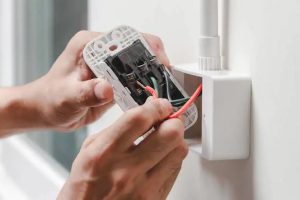What Color Code Is Used for Power Outlets?
In the electrifying world of electrical installations, power outlets stand as critical junctures, connecting the lifeblood of electricity to our devices and appliances. The color code used for wiring these outlets is not merely a matter of preference but a standardized system designed to enhance safety, facilitate installation, and streamline troubleshooting. Let’s plug into the specifics of this system, shedding light on the color codes that guide the wiring of power outlets.

The Standard Wiring Colors
When it comes to power outlets, the color code for the wiring is pretty standard across many regions, although slight variations exist depending on local regulations and standards. Here’s the breakdown:
Hot Wire – Black or Red
The hot wire carries the electrical current to the outlet. Black is the most common color used for the hot wire in single-phase installations. In circuits where two hot wires are needed, such as 220-volt connections, red is often used for the second hot wire.
Neutral Wire – White
The neutral wire completes the electrical circuit by providing a return path to the power source. White is universally recognized as the color for the neutral wire, ensuring consistency across different installations.
Ground Wire – Green or Bare Copper
The ground wire is a critical safety feature, providing a path for electrical current to safely dissipate into the earth in the event of a short circuit. Green or bare copper are the standard colors used for this purpose, signaling the wire’s safety function.
Understanding the Importance
The adherence to a standardized color code for power outlet wiring is vital for several reasons:
- Safety: Correct wiring prevents the risk of electrical fires, shocks, and other hazards.
- Efficiency: Standardized colors make it faster and easier for electricians to install, inspect, and repair electrical systems.
- Compliance: Following the established color code is often a requirement under local electrical codes and regulations.
Special Considerations for High-Load or Specialized Outlets
For outlets designed to handle higher loads, such as those for appliances like dryers and ranges, additional colors like blue or orange may be used to denote different phases or voltages. These are less common in typical residential settings but are crucial in commercial or industrial environments.
A Proactive Approach to Electrical Safety
Given the potential for regional differences and updates to standards, always consult the latest local electrical codes or a professional electrician when working on or designing electrical systems. This ensures not only compliance but also the highest level of safety.
Empowering Your Electrical Knowledge
For those looking to deepen their understanding of power outlet color code practices and principles, the comprehensive guide available at power outlet color code offers a wealth of information. This resource is invaluable for anyone from DIY enthusiasts to professional electricians, providing insights that ensure safe and effective electrical installations.
The Circuit of Knowledge
Grasping the color code used for power outlets illuminates the path to safer and more efficient electrical work. Whether you’re installing a new outlet, renovating a home, or simply satisfying your curiosity, the knowledge of these color codes equips you to approach the task with confidence. Remember, in the electrified maze of modern living, understanding the language of colors in electrical work is a powerful tool, opening the door to safer environments and smoother operations.